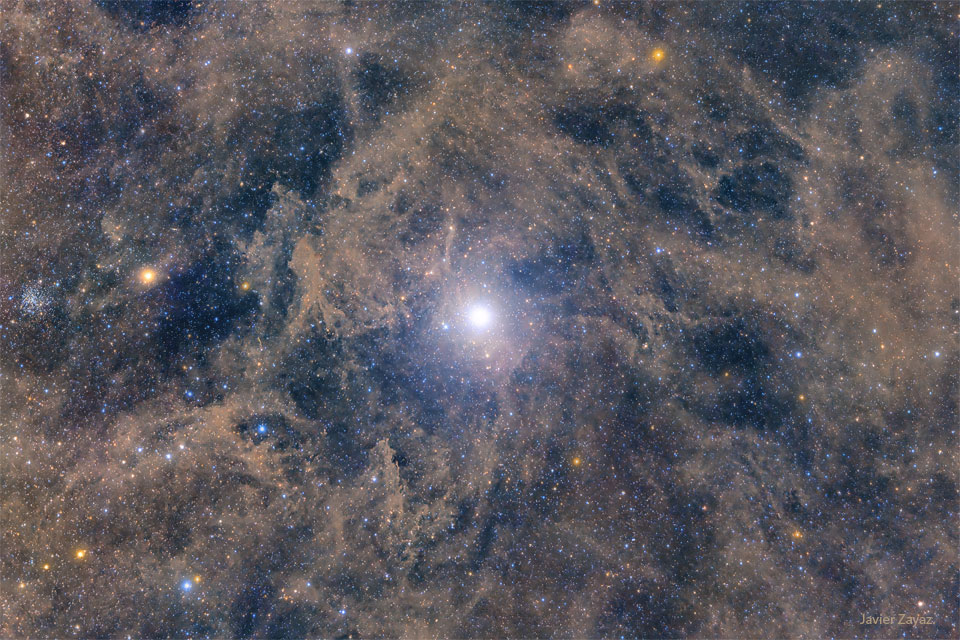2023年4月11日
North Star: Polaris and Surrounding Dust
Image Credit & Copyright: Javier Zayaz
Explanation: Why is Polaris called the North Star? First, Polaris is the nearest bright star toward the north spin axis of the Earth. Therefore, as the Earth turns, stars appear to revolve around Polaris, but Polaris itself always stays in the same northerly direction — making it the North Star. Since no bright star is near the south spin axis of the Earth, there is currently no bright South Star. Thousands of years ago, Earth’s spin axis pointed in a slightly different direction so that Vega was the North Star. Although Polaris is not the brightest star on the sky, it is easily located because it is nearly aligned with two stars in the cup of the Big Dipper. Polaris is near the center of the eight-degree wide featured image, a digital composite of hundreds of exposures that brings out faint gas and dust of the Integrated Flux Nebula (IFN) all over the frame as well as the globular star cluster NGC 188 on the far left. The surface of Cepheid Polaris slowly pulsates, causing the famous star to change its brightness by a few percent over the course of a few days.
Explore Your Universe: Random APOD Generator
Tomorrow’s picture: open space
北极星及其周围的尘埃
影像提供与版权: Javier Zayaz
说明: 为何北极星有指北星的称号?首先,目前北极星是北天离地球自转轴最近的亮星。因此,随着地球自转,北天的恒星也看似在旋绕北极星,而北极星本身则恒定不动,故为指北星。不过,在南天的地球自转轴指向附近,目前没有亮星,故无南极星。数千年前的地轴指向与现在不同,在那时织女星曾是指北星。虽然北极星并不是夜空中最亮的恒星,但要找到它并不难,因为它和北斗七星斗瓢的两颗星几乎连成一直线。在上面这幅经过数码处理,以突显共照耀星云(IFN)的昏暗云气和尘埃之8度宽主题影像里,北极星是中心附近最亮的那颗星,而影像左缘的球状星团为NGC 188。分类为造父变星的北极星,在为期数天期间,这颗著名恒星的表面会缓缓脉动胀缩,造成数个百分点的亮度变化。
探索你的宇宙: 随机APOD生成器
明日的图片: open space



